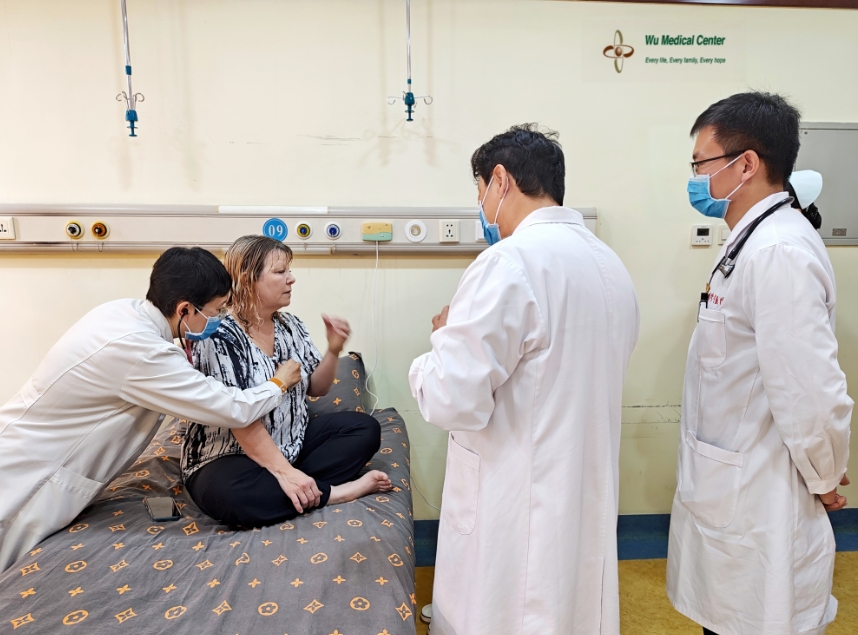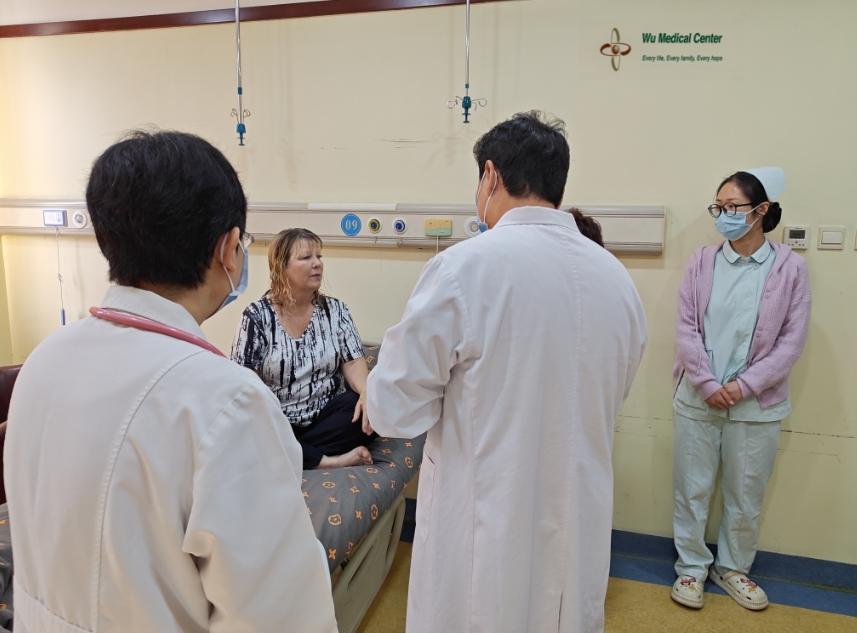Vivian Olum-Peripheral neuropathy-Pudendal neuralgia-(Canadian)
 Patient Name: Vivian Olum
Patient Name: Vivian Olum
Gender: Female
Age: 55 years old
Nationality: Canadian
Diagnosis: Peripheral neuropathy - Pudendal neuralgia
Before Treatment:
The patient was admitted with the primary complaint of "persistent vulvar pain for 20 years following a vaginal delivery," diagnosed as "peripheral neuropathy - pudendal neuralgia." Currently, she reported moderate pain, rating it about 5 out of 10, which sometimes affects her daily life during the day and impacts her sleep at night. She is currently taking citalopram to improve her mood, but the pain persists. She has no history of hypertension, diabetes, or coronary heart disease, no infectious disease history, and no history of blood transfusions. There are no known food or drug allergies.
Admission Examination:
The patient’s blood pressure was 111/68 mmHg, heart rate 78 beats per minute, respiratory rate 20 breaths per minute, and temperature 36.5 degrees Celsius. She is 157.5 cm tall and weighs 92 kg, with good nutritional status. Lung auscultation revealed clear breath sounds, with no dry or moist rales noted. Heart sounds were strong and regular, with no significant murmurs in any valve auscultation areas. Her abdomen was soft and flat.
Neurological Examination:
The patient was alert and spoke fluently. Her memory, calculation, and orientation were normal. There were no abnormalities in her cranial nerve examination. Muscle strength in all four limbs was rated at 5/5, and muscle tone was normal. Tendon reflexes in her limbs were normal, but there was a decrease in superficial and deep sensation in the perineal area. Pathological signs were negative. Coordination tests for her limbs were normal, and there were no signs of meningeal irritation.
Treatment Process:
The patient received a combination therapy of neural stem cells and mesenchymal stem cells, supplemented with CAST therapy, focusing on nerve repair, nerve nutrition, improving circulation, regulating immunity, and comprehensive rehabilitation.
After Treatment:
The patient showed significant improvement, with a marked reduction in perineal pain, averaging 0-1 out of 10. Superficial and deep sensations in the perineal area returned to normal, and her daily life and emotional state were minimally affected during the day. Sleep improved at night, and her overall mental state showed significant enhancement.



